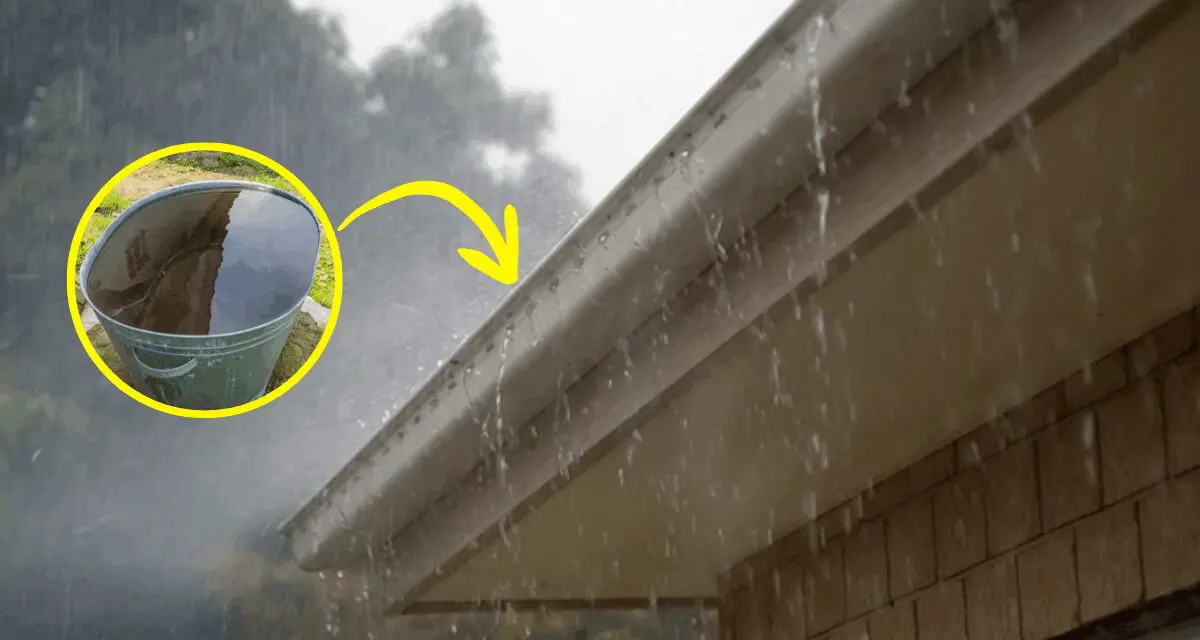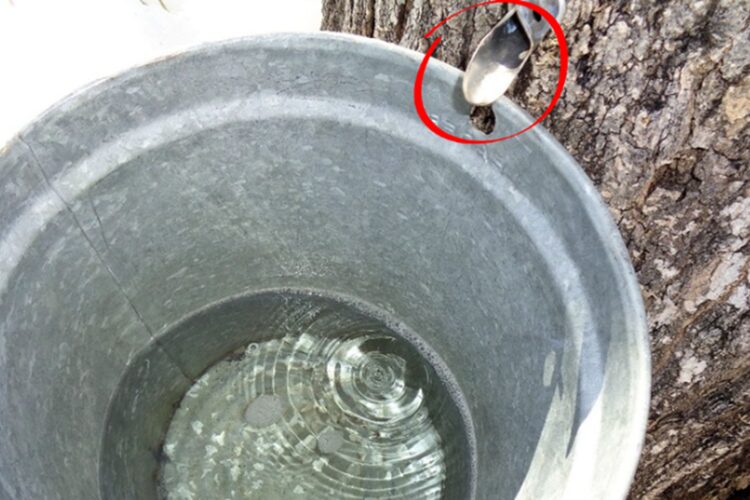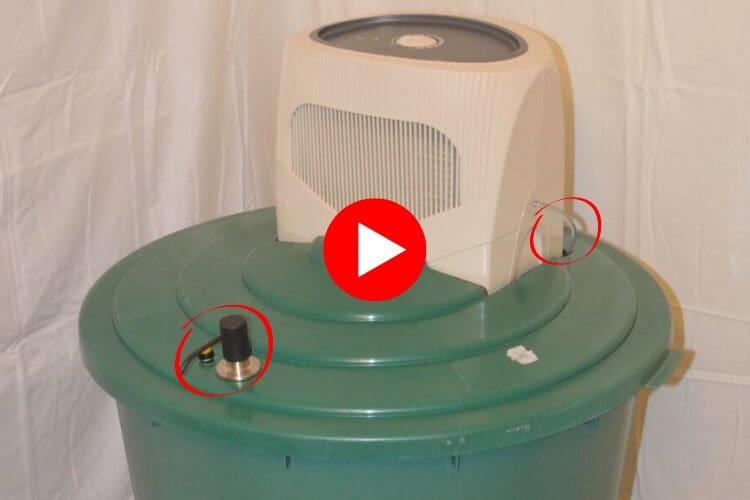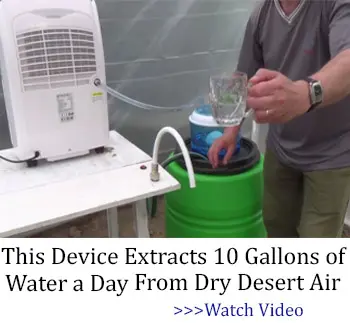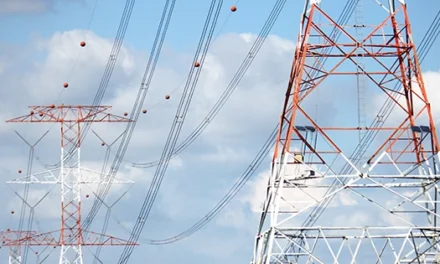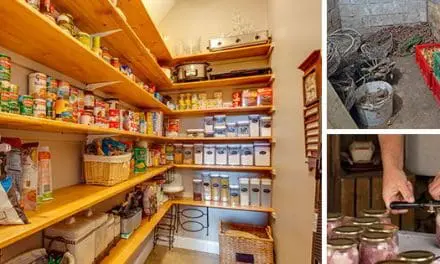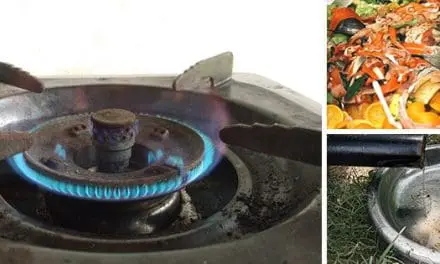It sounds like a lot, and it is, but your roof can easily capture more than 1,000 gallons of water even during a light rain. A lot depends on the size of your roof and obviously the amount of rain but regularly harvesting rainwater and storing it not only saves money but can offer you an emergency supply of water if the power is out.
Another benefit if for off grid living. If you don’t live in close proximity to a water source like a lake or creek, rainwater can keep the water flowing. It also can help for gardens that are remote or away from traditional water sources like a garden hose. A barn, shed or greenhouse on a piece of your property far from conventional water sources can make watering remote gardens and orchards easier if you know how to capture and store the rain.
Rainwater Harvesting 101
Rain gutters are the key for rainwater harvesting. They capture the runoff and channel it to downspouts that eventually drain onto or into the ground. Capturing the rain from the downspouts and directing it to a barrel or tank provides the storage.
There are various ways to capture the runoff from a downspout. One solution is an attachment that you connect to the top of a downspout with a hose angled off to the side to direct the water to your barrel or tank.
It’s called a rainwater rechanneler and you can attach them to one or more downspouts. Attaching them to more than one downspout can get you to 1,000 gallons faster depending on the amount of rainfall you receive at any given time.
Another option is to simply create a funnel to capture the runoff from a gutter. You can buy a large funnel or fashion one from a large PVC reducer fitting.
At the bottom of your improvised funnel a hose is connected to direct the water to your barrels or tanks.
There’s also an attachment that you can simply attach to the downspout with a leaf filter that directs the water downward into your barrel.
The built in filter helps to prevent debris like leaves and branches from clogging the intake or the inside of the tank. But there are other ways to filter out debris. One way is a large, meshed screen used specifically for filtering leaves from downspouts.
There are also screens that often show up on the top of water barrels and some tanks. These also do an effective job of filtering out debris.
Water Storage Options
Most rainwater barrels designed for rainwater collection have a 55 gallon capacity. That’s a bit short of our 1,000 gallon goal.
However, there are larger water tanks ranging in size from 500 to 1,000 gallons.
Most are made of thick plastic and have a variety of fittings and spigots to allow for harvesting from the tank. What’s critical is that the large tanks be placed on the ground, preferably on a foundation of bricks or stone. 1,000 gallons of water weighs 7,500 pounds. That’s almost 4 tons or 7.5 pounds per gallon. I learned a lot of these tricks from a guide called SHTF Water, which I received as a free bonus when I purchased this book. Supplies are extremely limited, so it’s one of those guides you’ll want to grab before it’s gone if you’re interested in getting it too. Here is the link I used.
Rainwater Uses
This isn’t too hard to figure out. If something needs watering you can use water from the rain barrel or tank. However, raising any rain barrel above ground level will provide some degree of water pressure, particularly as the tank or barrel starts to get empty. That’s why water towers are elevated.
If you’re really ambitious you can have a water tower built. The trick is going to be pumping the water up to the tank from smaller collection tanks on the ground, but you’ll have excellent water pressure.
Another possibility is combing barrels or tanks allowing the overflow from a barrel or tank to run into another barrel or tank and so on.
All rainwater collection barrels and tanks have an overflow outlet towards the top of the barrel or tank. A hose connected to the overflow outlet and directed into another barrel or tank will allow you to increase the capacity of your harvest and storage.
For you to completely protect your family and belongings when the next crisis hits, you don’t need to run for the hills… you don’t even need to leave your home.
As long as you have this.
The thing that will probably force most people to flee the safety of their homes is not a lack of food but a lack of safe drinking water.
That’s why you should know things like:
- The Deadly Water Mistakes to Avoid at All Costs
- How to Stockpile a Ton of Water for 365 Days
- A Simple and Cheap Device That Can Filter Huge Quantities of Drinking Water
- Why Bleach Is Not the Best for Purifying Water (and what to use instead)
- How to Harvest Atmospheric Water
- Why You Should Place a Silver Coin in a Blue Barrel
- How to Test Your Water to See if It’s Still Safe to Drink
- How to Desalinize Water Using a Device That Costs Only $4
Plus, many other things that your life will depend on one day.
And you can find these in the Bug-In Guide book. Written by Joel Lambert, a former Navy Seal, this isn’t a mass-market manual like the cheap ones you find in libraries and online stores. Only a limited number of copies have been printed.
In honor of this year’s Veterans Day, Joel has released a limited-time offer on his book. Today only, you can claim an exclusive 68% OFF discount as a way to celebrate the courage, discipline, and self-reliance that inspired this guide. Supplies are limited, and once the offer ends, the price returns to normal, no exceptions. Act now to grab your copy at this special rate. The offer expires tonight.
Filtering Rainwater for Drinking
It’s easy to assume rainwater is pure and for the most part it is when it’s coming down straight from the sky. But rainwater that has run off of a roof can present some challenges. It is running over everything on the roof. This could include dust, pollen, small bits of debris the screens and filters don’t catch, and most notoriously – bird droppings.
The simple fact is that rain runoff from a roof is contaminated. It’s not a problem if you’re watering a garden and the bird droppings may actually help. But bird droppings are loaded with bacteria and as a result, so is the water in the barrel or tank.
Most Filters Fail. This Tree Trick Doesn’t (Get Clean Water 24/7 All Year-Round)
The simplest solution is to filter the water through a fine screen lined with fabric with a tight weave and then boil it. You could also treat it with a chemical water treatment that has either an iodine or chloring base or fun it through a water filter with a ceramic filter that will capture the microscopic bacteria to purify the water. The telegram is that you should never drink rainwater from a roof raw. Filter and purify it.
Rainwater Harvesting Fails
In spite of our best efforts, things can go wrong. Here are a few things to remember if you are setting up a rainwater harvesting system.
- Remember to check your debris filters and screens. Leaves can get stopped by the filter or screen but become matted and stop the flow of water into the downspout, barrel or tank. It will then overflow on the ground limiting your harvest.
- Monitor the flow from your spigots and outlets. If the water flow seems limited it’s possible that some small debris or shingle grit is clogging the spigot or outlet. Remove the spigot or outlet and let the water flow from the barrel or tank backwards and around any screw grooves.
- Clean and sanitize your barrels and tanks every 6 months. When your tank water level is low (but not empty) Drain off about 20 gallons of water into 5-gallon buckets and then pour a pint of chlorine bleach into the tanks. Open the spigot or valve and pour in the water to flush the tank out until it is empty. Shut the spigot or valve. The chlorine will eventually degrade so you won’t have a problem, but it will kill any germs or contaminated debris that has settled to the bottom of the tank.
- Take advantage of torrential rains. Torrential rains will fill your tank quickly. Rather than draining off the overflow with the top valve. Open the bottom valve or spigot and let the water flow out. This is another good way to flush out any small debris that has settled to the bottom of the barrel or tank.
- Support your tanks, especially on a platform. Water weighs 7.5 pounds per gallon. If you have elevated your barrels or tank, make sure your supports are sturdy and can support the total, filled weight.
It’s Not That Hard
It’s not hard to connect rainwater rechannelers and once your storage tank is in place the whole operation is pretty much self-sustaining. It’s a great way to save money if you have a water bill and a good backup source of water anywhere for any reason.
If you want a more advanced water filtration system, you can turn to a DIY water generator such as The Water Freedom System. It’s based on declassified U.S. Army blueprints and has proven its efficiency on battlefields in some of the world’s driest deserts.
The good news is that you can assemble such a system in just a few hours, using simple components. Many of them might already be lying around your household and will be listed further in this article. Check out the plans here and get your own atmospheric water generator, freeing yourself from dependence on the public grid or the supermarket.
DIY Ingenious Rainwater Harvesting Systems
Why You Should Always Store Water Next To A Fence (Video)
How to Collect Rainwater Without Gutters

